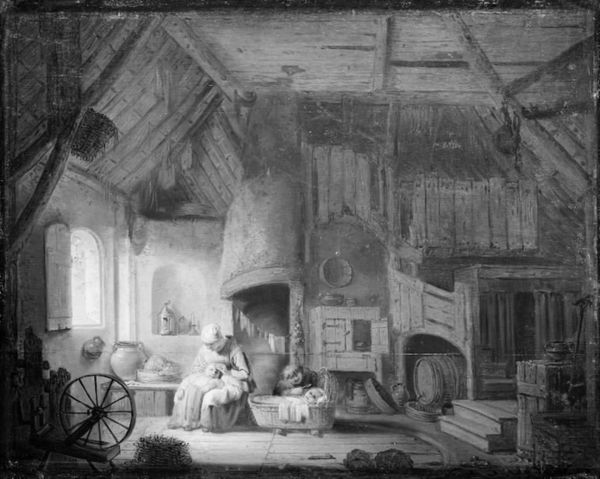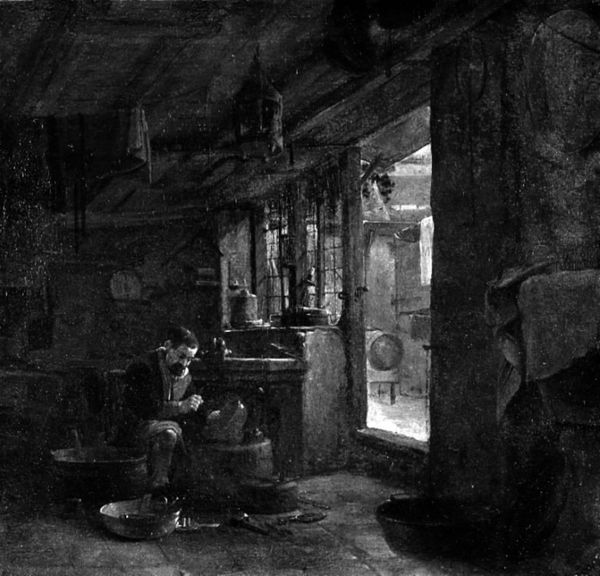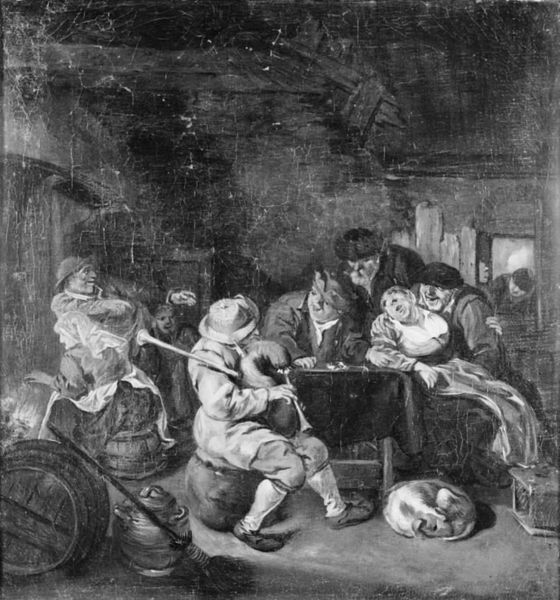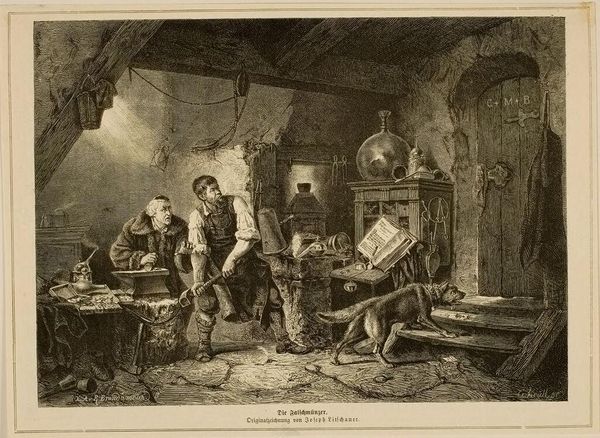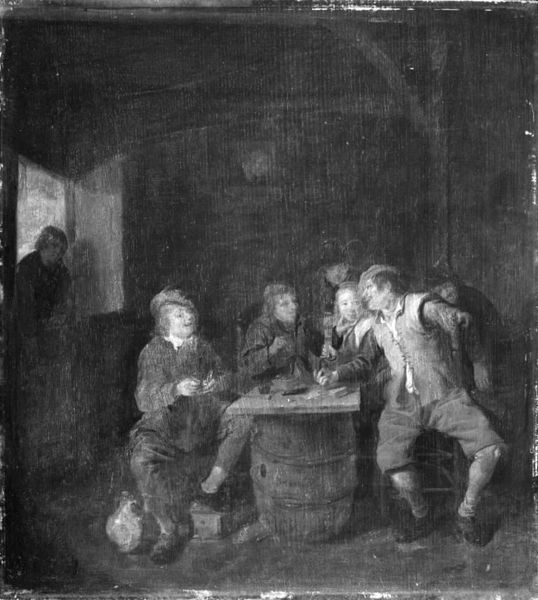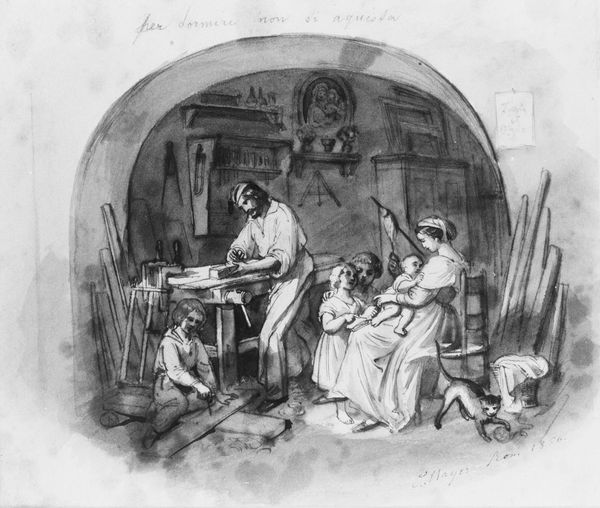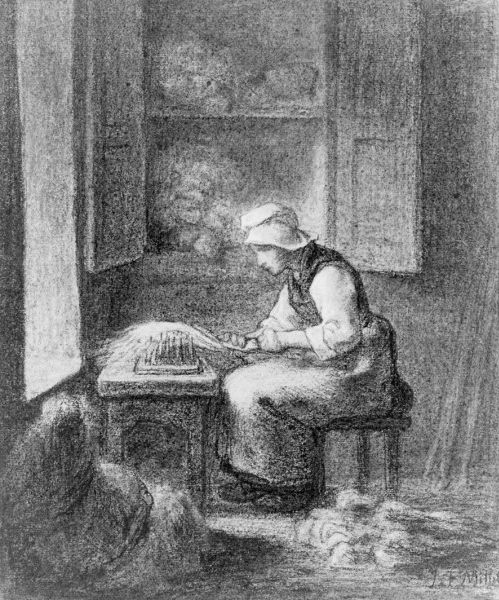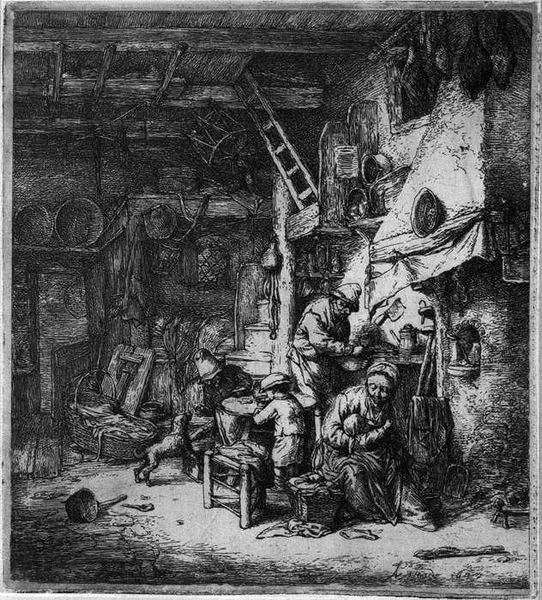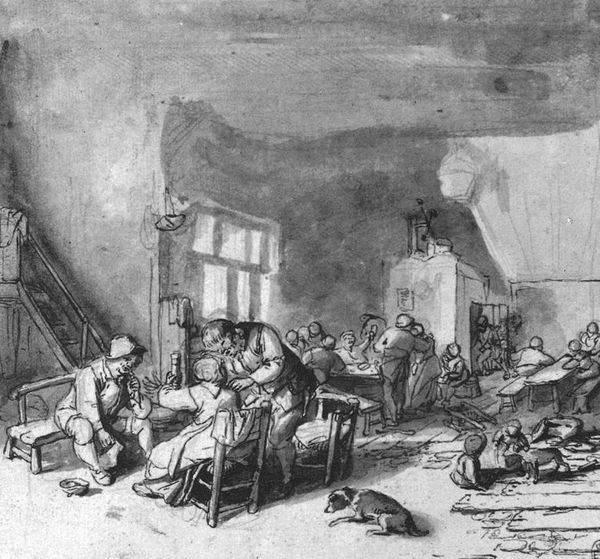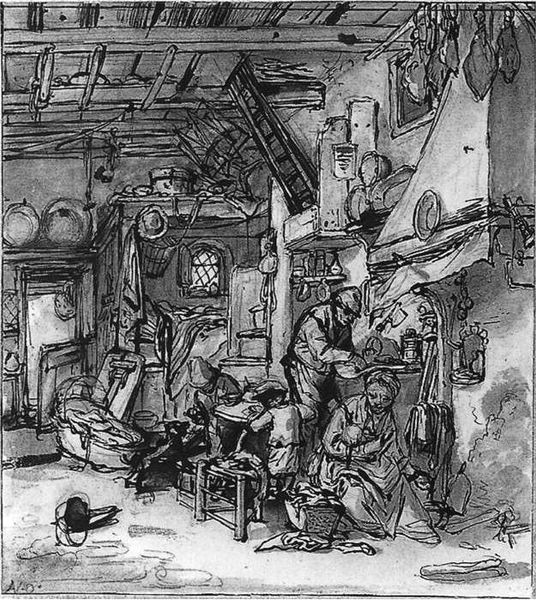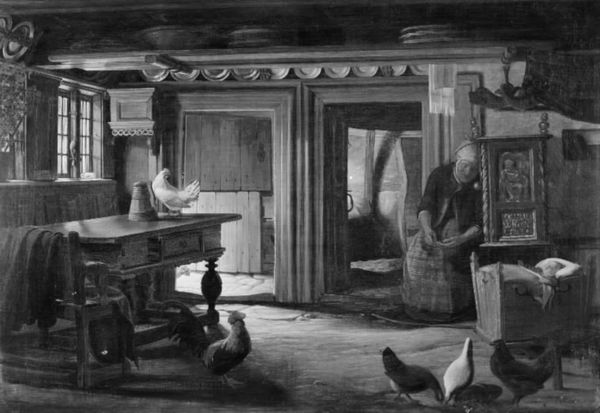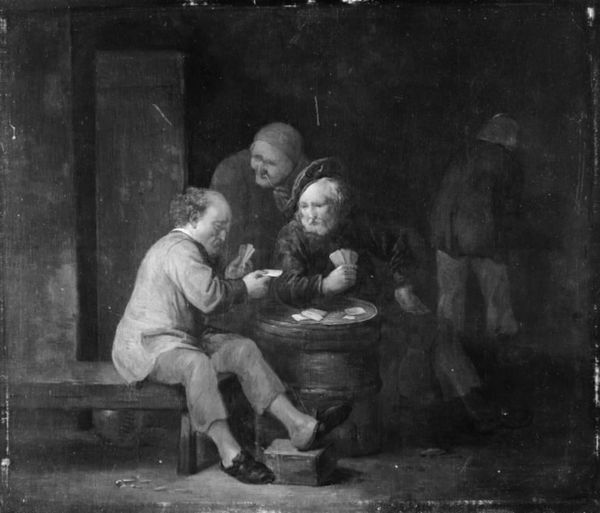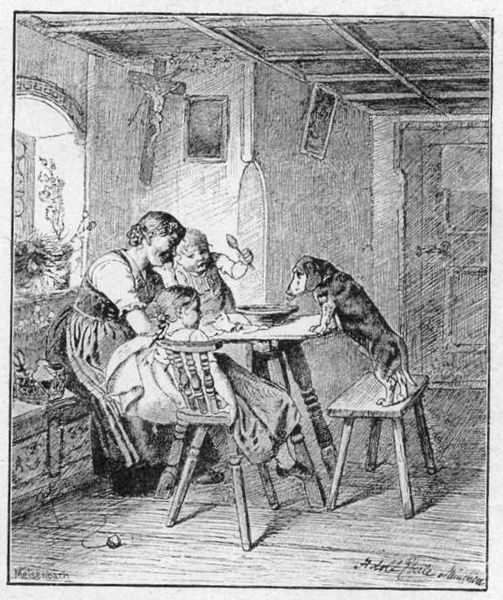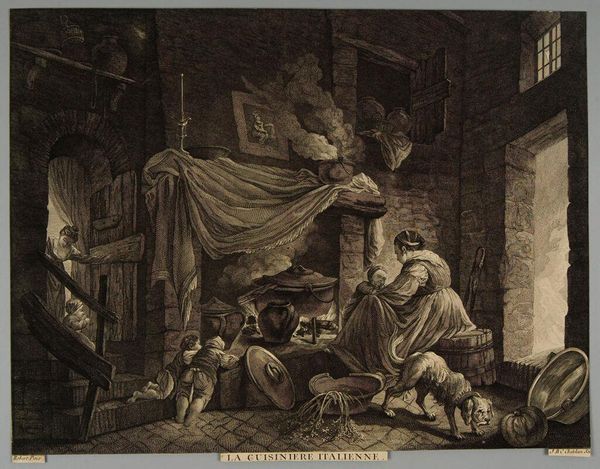
painting, oil-paint, wood
#
dutch-golden-age
#
painting
#
oil-paint
#
wood
#
genre-painting
#
history-painting
#
monochrome
#
realism
#
monochrome
Dimensions: 38.5 cm (height) x 33.5 cm (width) (Netto)
Editor: This painting, "The Weaver at Work in his Home" by Thomas Wijck, dates from 1631 to 1677 and is rendered in oil paint on wood. It strikes me as incredibly intimate, almost claustrophobic, in its depiction of labor and domestic life intertwined. What aspects of this piece grab your attention? Curator: The cramped setting you noted is certainly evocative. Think about the social history being represented. Wijck painted this during the Dutch Golden Age, a period of immense economic growth fueled by trade, including textiles. This piece offers a glimpse into the domestic production that supported that growth, literally showing the weaver at work. How do you think that the positioning of the woman with the child challenges, or reinforces, gender roles? Editor: That's interesting! I hadn't considered that angle. It's like she’s both caregiver and part of the workforce, but indirectly. Perhaps it implies how women’s work, even when domestic, underpinned the entire economic system. The weaver is actively producing, while she is nurturing future labor. Do you see the painting as critical of that social dynamic, or simply documenting it? Curator: I believe it’s layered. While appearing as a simple genre scene, Wijck’s choices—the subdued palette, the crowded composition—hint at the pressures within that system. Is the artist simply reflecting what he saw, or is the scene subtly emphasizing how these figures were trapped into roles circumscribed by class, and to a degree, by their identities? Does the lack of idealization serve as a commentary, making this genre scene subtly radical? Editor: So by examining the historical and social context, we can unpack a much deeper meaning beyond just a surface-level observation of daily life. Curator: Precisely! This intersectional approach helps us consider the painting not merely as a static image but as a record, perhaps even a subtle critique, of its time. The home, presented as an intimate place of comfort, becomes a site of production – and potential constraint.
Comments
No comments
Be the first to comment and join the conversation on the ultimate creative platform.
